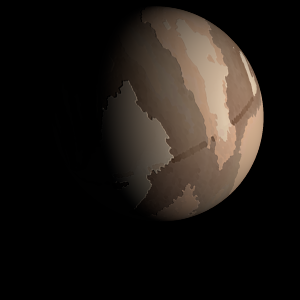|
|
Space Astro
|
Info for exoplanet "Halisaxa Gir"
| Scientific (actual) data |
|---|
| Name | GJ 367 c |
| Planet status | Confirmed |
| Mass sini | 0.01284 |
| Orbital period | 11.53 |
| Orbit eccentricity | 0.09 |
| Discovered | 2023 |
| Updated | 2023-07-19 |
| Omega | 326 |
| K | 1.99 |
| Publication | Published in a refereed paper |
| Detection type | Radial Velocity |
| Mass measurement type | Radial Velocity |
| Star name | GJ 367 |
| Right ascension | 146.13° |
| Declination | -45.78° |
| Mag v | 10 |
| Star distance | 9.41 |
| Star metallicity | -0.01 |
| Star mass | 0.454 |
| Star radius | 0.457 |
| Star sp type | M1 |
| Star temperature | 3522 |
| Star alternate names | TOI-731 |
| Wikipedia article | GJ 367 c |
Back
| |
| Fictional info (?) |
|---|
| Suggested name | Halisaxa Gir |
| Planet type | Cold planet |
| When viewed from Earth, this proximity to GJ 367 means the planet can only be seen near the western or eastern horizon during the early evening or early morning. |
| Atmosphere | Molecular hydrogen | 48% |
| Nitric oxide | 43% |
| Water vapor | 7.3% |
| Ozone | 1.3% |
| Atmospheric pressure | 0.7 bar |
 |
| No known satellites |
| Google search for Halisaxa gir |
|
Website by Joachim Michaelis
|
|
|
|